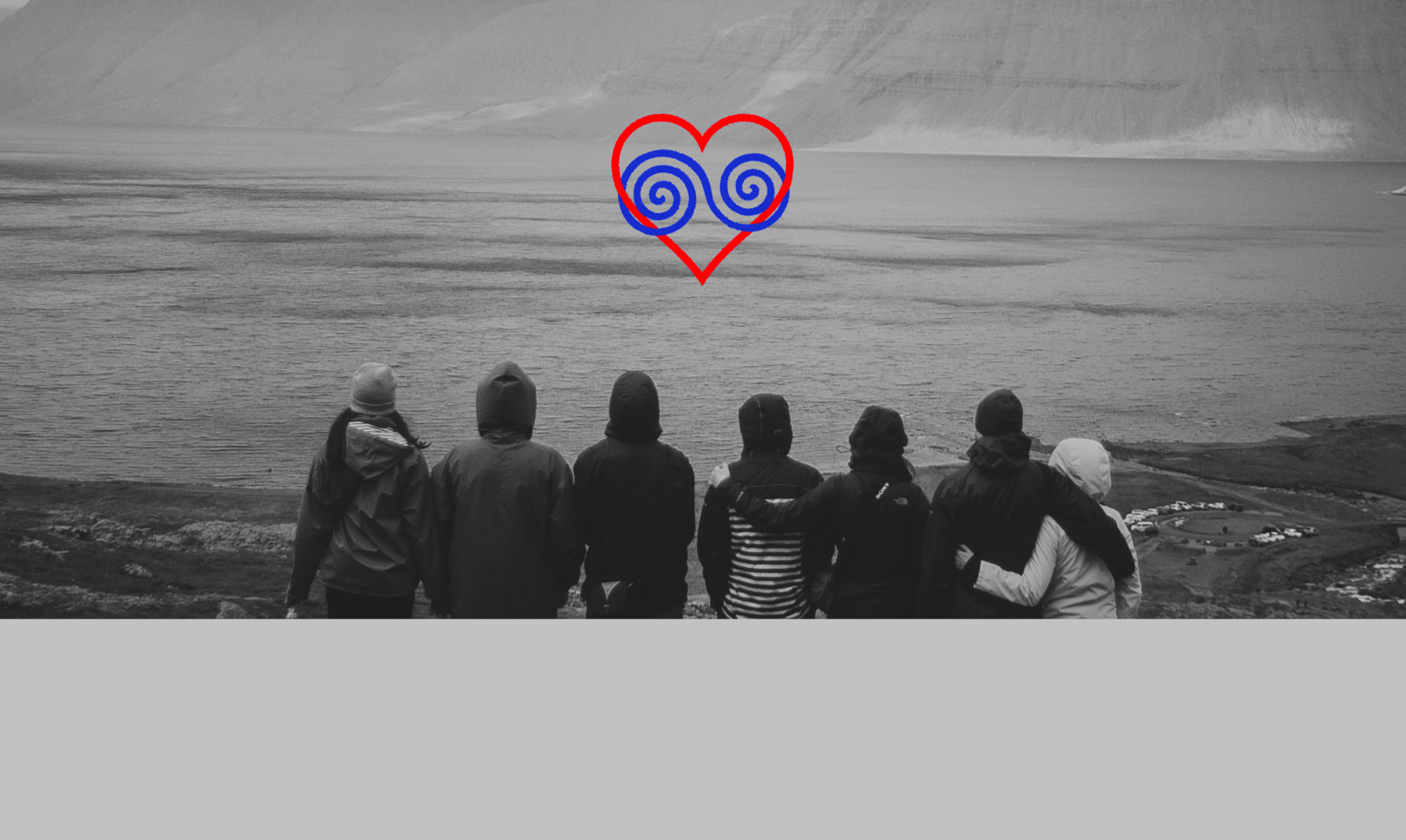Frozen moments
Recently, in a social network – within a chat forum that focusses on multiple relationships – there was a discussion about infatuation and love. We here at home continued talking about these topics – and for that reason I want to use my blog to share our thoughts this way.

First of all, we considered that “falling in love” is probably a completely individual process, which every human presumably experiences in distinctively – especially if we leave the biological, phylogenetic, cerebral and hormonal proceedings of oxcytocin and vasopressin, testosterone and prolakin out of account (very detailed in this respect R.D. Precht in his book “Love – A disorderly feeling“, Goldmann 2009, Chapter 1: What love has to do with biology).
Often, true falling in love is preceded by so-called “idolising“.
Heroes, movie stars, musicians, models and the unreachable person of your dreams in the the other year group can be idolised. What those “target groups” have in common is that because of the imaginary or actual distance to these individuals, we tend to fancy our own imagination concerning these people – and not so much the real people themselves.
If the whole thing becomes “more serious”, when we actually fall in love with a tangible counterpart, then, nevertheless, the basis for this occurence often still results from something like “idolising”. Interestingly enough, it seems – as in the case of the “pragmatists and idealists” – that there are usually two initial positions:
The first group falls in love with another person because this person is doing something (for them).
The second group falls in love with another person because they believe they have recognised some part of the other person’s personality.
The first group I would like to call – maybe somewhat contrieved – “dissimilatory” (from Latin dissimilis, “dissimilar/unalike”).
People who belong to this group are mostly fascinated by the diversity of people. They attach great importance to their own independence and therefore appreciate it regarding their counterpart(s).
If, in this way, new perspectives regularly promise fresh input because of the diverse impulses of the different characters, a dissimilatory personality would probably think something like: “Yeah, that’s really cool NOW!”
The downside of a dissimilatory style would be a certain “savourer mode”, especially concerning relationshios to relish such moments “as long as it lasts” and a preponderance regarding positive stimuli only (“It has to be good, it has to be easy – if it is not easy, it’s/you’re not right… “).
Accordingly, I would like to call the second group “assimilatory” (from Latin assimilis, “similar”).
People who belong to this group are looking very quickly for commonality concerning themselves and their counterparts. They appreciate a feeling of togetherness and value all-round efforts for a certain harmony.
If a certain shared space begins to form in this way, an assimilatory personality would probably think something like, “Yeah, that’s really cool HERE!”.
The downside of the assimilatory style would therefore be a penchant for compulsive “similarity” and especially in relationships an urge for complete “wholeness” (“If we do not attain the greatest possible congruence and harmony, it’s/you’re not right…”).
Despite these differences, both groups fall in love with increasing regularity about equally often. And since infatuation afflicts to our bodies and our minds (which are basically trimmed to a rather economic energy management) always stress in terms of additional energy which has to be applied, falling in love is never really discretionary (and anyway: otherwise we would continue the much more comfortable idolising…).
To be precise, infatuation is usually facilitated by certain needs – or even neediness – which are aimed at ensuring personal well-being or at least satisfaction. Almost always these are needs which derive from the categories community and participation (e.g. acceptance, caring, community, support, connection), communication and comprehension (e.g. attention, reciprocity, being heard, trust), and affection and love (e.g. empathy, closeness, tenderness, sexuality ).
These needs activate us and motivate us (or at least put us in an open, expectant state), so that when we fall in love – at a time when we can barely assess the chosen counterpart – we are virtually prepared to invest invest in a potential or rather facultative future that may never manifest in our lives. Exciting parameters (as in the “Bridge experiment” mentioned in Entry 15) and/or indifferent pronounced personal boundaries (as in many psychological and neurophysiologically sensitive states) can additionally intensify this effect very easily.
However amazing and almost irrational that might appear at first glance, this is quite plausibel for us, who are members of the species “Homo Sapiens” – no matter to which of the two groups mentioned above we count ourselves.
For we humans are intentional and planning beings because we are conscious concerning our limited temporary nature, a fact which probably distinguishes us even from the majority of other mammals closely related to us.
We are aware that we have a past and a future that can still be shaped – and therefore we are aware of our finiteness. From there it is only a small step to the realisation that our lives – literally for the better and worse – are subject to processiveness and changeability.
The philosopher Friedrich Wilhelm Nietzsche (Ecce Homo 1888) once called this unavoidable cognition quite appropriate “affirmation of evanescence“, because we human beings experience every day that it is almost impossible to exist permanently in a state of “Here & Now“. We can strive for a present moment, we can experience it, savour it – but we can not cling to it and thus it will not be permanent – like everything else.
And that’s why sometimes we are jealous of the animals or the rest of nature, who seem to be unaware of their time-constrained dimension – and that’s why they often seem “balanced” and even “contented” to us (which means they always live true to their “contence”), because they radiate, that they are intuitively/instinctively always “consistent” in their conduct.
“Always” does not exist for us – and therefore no perpetual “consistent“.
In that respect, “infatuation” is a somewhat touchy subject: Because the hormonal upsurge quickly restricts our perceptive faculty concerning our limited temporary nature. As already in 1788 the famous baron Adolph von Knigge stated in his 4th chapter “Concerning the relations to and among lovers”:
»It is almost reasonably impossible to associate oneself with lovers; like drunks they are incapable of socialising, since – except their idol of desire – the whole wide world seems dead to them.«
It is precisely this focus on the “idol”, the beloved person, that effectively puts us in a kind of “spatio-temporal extra-zone”, wherein it is very easy for the participants to assume the “part for the whole” – to be more accurate: During our infatuation we are prone to believe that we have already mastered the most important part – and that our “journey towards each other” has already achieved complete mutual understanding.
As even Mr. Knigge noted (in the same chapter):
»The happiest moments in love are when you have not yet discovered each other with words, yet understand every countenance, every look. The most blissful pleasures are those which one communicates and receives without giving reason to account. The subtlety of feeling often does not suffer that way, because the explanation of things would spoil all their high value – which therefore can not be given and accepted properly without insulting the delicacy, once one has said something about it. It is tacitly granted that which one may not condone, when it is solicited, or when it becomes evident that it should be intentionally given.«
The old baron has observed this quite well – but from my point of view, as a conclusion, he praises these “happiest moments” of falling in love a little too much. For what he describes is, strictly speaking, still a state of absent communication, of hazy vagueness and sweet non-certainty. This arrangement, however, can still spoil any emerging relationship, since non-certainty might be a acceptable basis for idolising – but it is no useful foundation for reciprocal and constant love.
Because if we eventually “relate” to each other following an intense phase of infatuation we will in any case get to know each other in “other (much more mundane) contexts” as well: There our counterpart(s) might act differently in contrast to those initial actions we deemed so fascinating. Or our loved ones suddenly show facets of their personality that we had not recognised or expected so far…
What can be done?
The most promising secret of sound and long-lasting relationships, if one asks the lucky participants, is that the involved parties view each other not only as “lovers“, but also as “friends“. These people have internalised that “getting to know each other” means “getting to know thyself” at the same time.
It is therefore important for both groups mentioned above to recognise that neither inspirational experiences nor communal harmony can be achieved by mere (one-sided) volition.
Because in doing so we try the impossible: We try to preserve our loved ones in our imagination and in our wishes in a certain state that is “consistent” for us and that attracts us because it is in its way dissimilar or similar to us. But that approach can not do justice to “processiveness” and “changeability”, our actual human nature, in any way – and thus “forbids” our loved ones to ever change or develop.
But
if you inwardly let go of your loved ones, then you have arrived
(every time) in the Here & Now and no longer cling to constant
volition (an insight which is prevalent e.g. in Buddhism). Your own
energy can suddenly flow unhindered to your loved ones and is no
longer blocked by your fixed conception or by imposing pressure. This
does not mean not to act actively, but action arises from the moment,
without a predetermined plan. It also does not mean to always agree.
Instead, one does not fixate on a goal, but is part of the events and
the proceedings.
It also means to embrace the moment as it
emerges, to take the next step from there or to refrain from it, and
in any case to accept the consequences of it.¹
And
whether we are more likely to be “dissimilatory” or
“assimilatory”: That is where the real “mutual we”
begins.
¹ This last paragraph was taken (with little alterations) from the book “Being with Horses… – Life is unique” by Sabine Birmann, Ippikon Verlag 2017.
Thanks to Jean-Alain Passard on Pixabay for the photo.

